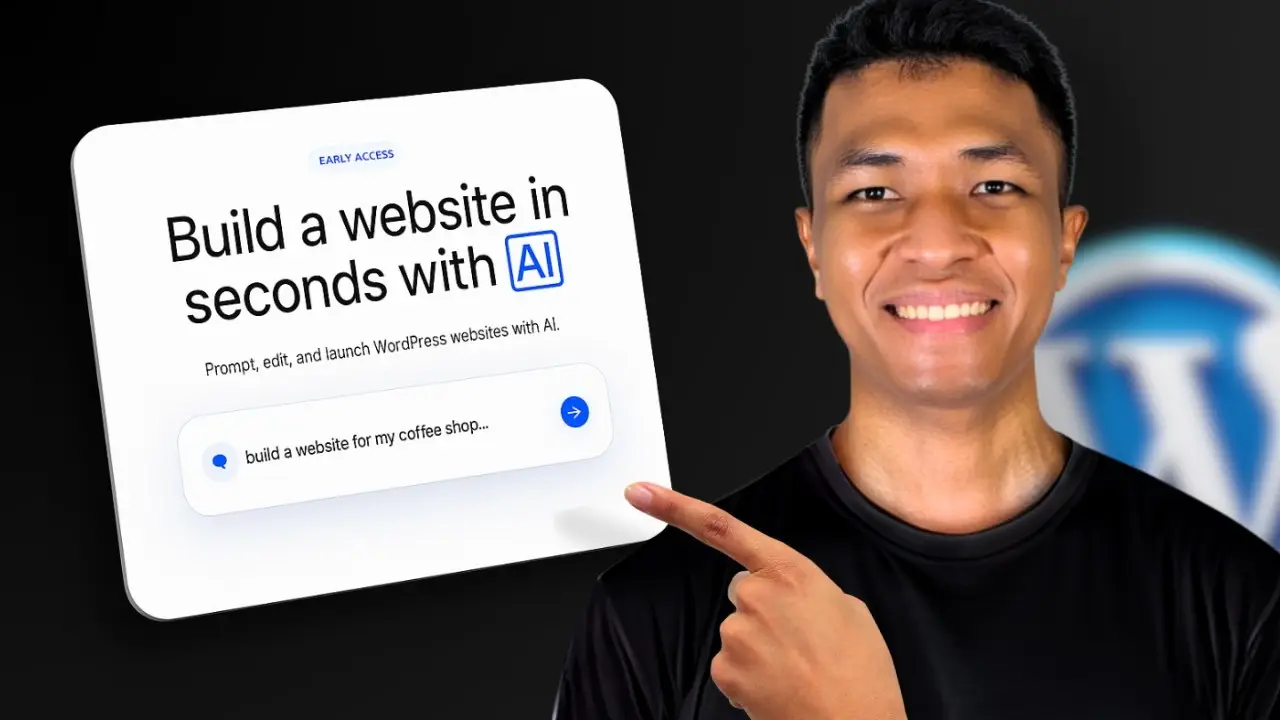- AI-powered tools can automatically generate descriptive, SEO-friendly names for image files
- Renaming images with relevant keywords improves search engine visibility and accessibility
- Several options exist, from desktop software to WordPress plugins to using AI chatbots
I’ve always struggled with coming up with good file names for the images on my website. Let’s face it – naming dozens of images with descriptive, SEO-friendly titles can be a real chore. But recently, I discovered some awesome AI tools that can do the heavy lifting for us. In this post, I’ll walk you through a few different methods to use artificial intelligence for renaming your images and boosting your SEO.
Why bother renaming images in the first place? Well, search engines can’t actually “see” images – they rely on things like file names and alt text to understand what an image contains. Using descriptive, keyword-rich file names helps Google and other search engines properly index your images. It also improves accessibility for visually impaired users who rely on screen readers.
The problem is, most of us are lazy when it comes to image names. We upload files with default names like IMG_1234.jpg or Screenshot_20220315.png. These generic names tell search engines nothing about the actual content. Manually renaming every single image takes forever. That’s where AI comes to the rescue.
RenAI: Automated Image Renaming for Mac and Windows
The first tool I want to highlight is called RenAI. This nifty little desktop app runs on both Mac and Windows computers. It uses AI vision models like GPT, Gemini, or Claude to analyze your images and generate descriptive file names automatically.
Here’s how it works:
- Install RenAI on your computer
- Select an image (or multiple images) in your file explorer
- Right-click and choose “Send to” > “RenAI”
- The AI analyzes the image content and renames the file
I tested it out on a bunch of random photos on my computer, and I was impressed with the results. For a picture of a bicycle, it came up with “Red mountain bike parked against brick wall.jpg” – way more descriptive than the original file name.
RenAI even works well on screenshots, which can be tricky for AI to parse. I tried it on a screenshot of Photoshop, and it accurately named it “Screenshot of Adobe Photoshop with blank canvas.png”.
One cool extra feature is RenTag, which populates the image metadata fields like title, subject, and tags. This provides even more context for search engines to work with.
The downside is that RenAI isn’t free – you have to purchase a license. But it’s a one-time fee rather than a subscription, and $5 lets you rename about 6,000 images. For busy bloggers or content creators, that could be well worth the time savings.
WordPress Plugins for AI Image Renaming
If you’re using WordPress for your website, there are some AI plugins that can rename your images right in the media library. One option is the Media File Renamer plugin, which works in conjunction with the AI Engine plugin.
After installing both plugins, you can enable AI-powered renaming in the settings. In theory, it should use GPT Vision to analyze your uploaded images and suggest better file names.
However, I ran into some issues when testing it out. The plugin seemed to be relying more on existing metadata rather than actually “seeing” the image content. For example, it renamed a picture of blue wireless headphones to “Orange Wired Headphones” – not very accurate!
I also discovered that the AI Vision feature is locked behind a premium subscription ($39/year). Personally, I prefer renaming images before uploading them to WordPress. But if you want to rename files directly in your media library, this plugin might be worth exploring further.
Using AI Chatbots for Image Descriptions
For a free method that works well for smaller batches of images, you can leverage AI chatbots like GPT, Claude, or Gemini. Here’s the process:
- Upload an image to the AI chatbot
- Use a prompt like: “Generate an SEO-friendly description for the following image. Answer with a code window so I can copy it quickly.”
- Copy the generated description
- Use it to rename your image file
While not as automated as the other methods, this approach gives you more control over the descriptions. You can tweak the prompt to focus on specific attributes you want to highlight.
Choosing the Right Method for Your Needs
So which approach should you use? Here are my recommendations:
- For bulk renaming on your computer: RenAI is fast and accurate
- For WordPress users: Test out the Media File Renamer plugin (but be aware of limitations)
- For occasional renaming: Use an AI chatbot like Claude or GPT
Ultimately, the best method depends on your workflow and the volume of images you’re dealing with. The important thing is to start using descriptive, keyword-rich file names for your images. Your SEO will thank you!
Pro tip: Combine AI-generated names with your own tweaks for the best results. The AI might miss important context that you can easily add.
Other Ways to Optimize Images for SEO
While we’re on the topic of image SEO, here are a few other tips to keep in mind:
- Compress images to reduce file size without sacrificing quality
- Use descriptive alt text for accessibility and SEO
- Create an image sitemap to help search engines discover your images
- Use relevant image captions when appropriate
- Consider lazy loading for improved page speed
Remember, optimizing your images isn’t just about pleasing search engines. It also creates a better user experience for your website visitors. Clear, descriptive file names make it easier for everyone to understand your content.
The Future of AI and Image SEO
As AI technology continues to advance, we can expect even more powerful tools for image optimization. Future AI might be able to:
- Automatically generate optimized alt text
- Suggest relevant image captions
- Identify the most SEO-valuable images on a page
- Predict which images are most likely to appear in image search results
The key is to stay adaptable and keep learning about new AI tools as they emerge. The landscape of SEO is always changing, and embracing AI can give you a significant edge.
Wrapping Up
Renaming images might seem like a small detail, but it can have a big impact on your overall SEO strategy. By leveraging AI tools, you can turn this tedious task into a quick and easy process. Whether you choose a desktop app like RenAI, a WordPress plugin, or simply chat with an AI assistant, the important thing is to start giving your images the descriptive names they deserve.
Have you tried any of these AI image renaming methods? Or do you have other tips for optimizing images for SEO? Let me know in the comments! I’m always eager to learn new tricks from fellow content creators.
Remember, SEO is a marathon, not a sprint. Small optimizations like image names add up over time to improve your search engine visibility. So why not let AI lend a hand? Your future self (and your website visitors) will thank you.






